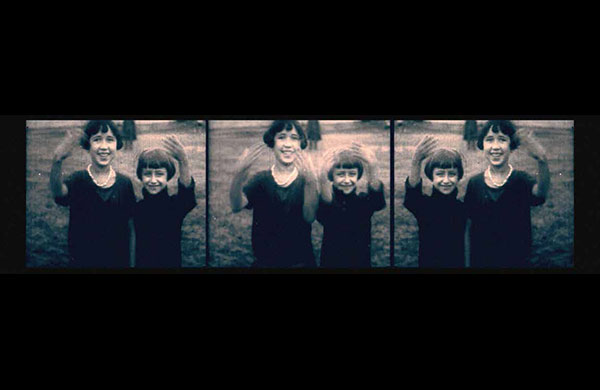 For the longest time the question of the contribution of Jews to Arabic music haunted me. Every time I listen to a kaddish with melody, follow the services of a typical Shabbat morning or enjoy a pizmon; I ask myself, did we take this beautiful music from the Arabs without giving anything back to them?
For the longest time the question of the contribution of Jews to Arabic music haunted me. Every time I listen to a kaddish with melody, follow the services of a typical Shabbat morning or enjoy a pizmon; I ask myself, did we take this beautiful music from the Arabs without giving anything back to them?
True, we have sanctified those secular songs and made them hymns praising G-d, but the question remains—is the music used in our religious services stolen music?
Many would argue that there is no such thing as stolen culture because all cultures influence each other. For examples many Turkish songs were adapted, verbatim, to Arabic music.
Furthermore, no one expects Jews to contribute anything to the field of Arabic music, however, if we made no contribution, this would be the only field in humanities that we behaved that way.
Trying to find an answer to that question, my family and I decided to spend part of the 2010 winter vacation in Cairo, Egypt. A good part of my time was spent at the archives of the library of the Arab Music Institute there.
During that visit, I came to realize that the Jews had contributed immensely to the art of Arabic music. This contribution encompasses the field of composing, singing, instrument playing and preserving.
Musician and composer Daoud Hosni was the biggest contributor. Hosni was born in Cairo in 1870 to a Jewish Karraite family. Incidentally, in Egypt during the 1920s, there were about 75,000 Jews. Of them 5,000 were of the Karraite sect. Although we categorically do not agree with their beliefs, they are Jews in every sense of the word.
Daoud’s father, Eliahu—a goldsmith and a great oud player—his mother and most importantly the religious melodies during the Shabbat services at the synagogue influenced and nurtured his prodigious musical inclination and capabilities.
In the field of classical Egyptian music, the two main predecessors of Hosni were Abdo al Hamuli and Muhammad Uthman. We have many pizmonim for songs composed by each of these musicians, especially the latter.
Hosni mastered playing the oud as a child and he composed a dawr when he was 20. A dawr is a complex form of Arabic musical composition consisting of two parts: “madhab,” which is the base of the piece, and a “dawr,” meaning a circle. He was called the artist with “golden ears” because he was able to remember songs quickly and accurately after listening to them once. At that time, no musical notes existed for many songs and the only way to transfer them was from mouth to ear.
His mentor, Uthman, recognized the ingenuity of Hosni, and sang the dawr “Aziz Hubbak” composed by his student.
Before long, Hosni’s fame spread. In 1906, he won the prize of the Musical Congress in Paris for his dawr “Asir al Ushki.”
Incidentally, many other Jews from Egypt, Iraq, Lebanon and Syria participated in that Congress in different roles.
Hosni introduced significant innovations to Arabic music by incorporating Persian and Turkish elements in his compositions. He elevated the art of Arabic music to heights never reached before. Housni lived at a particularly exciting time because during that period, the phonograph and the radio were invented. For the first time, music could be recorded and broadcast, and thus the popularization of music among the masses became widespread.
Hosni composed profusely. It is said that he has more than 500 compositions. The catalogue of the library of the Arabic Music Institute lists 165 compositions by him; more than twice any other composer. Dr. Abbas Salam, the director of the library told me that the library does not have the entire work of any composer, including that of Hosni.
In the latter part of his life, in response to the trend in Egypt to adopt European culture, Hosni wrote the first complete Arabic opera, ever: “Samson and Delilah.” It was received with an overwhelming enthusiasm by the masses. Furthermore, he composed tens of operettas.
The Institute of the Arab World in Paris has a catalogue of all the dawrs recorded from 1903-1935. Of the 314 dawrs catalogued, Hosni composed 72; Uthman, the second most prolific composer, wrote 41. This is in addition to tens of ballads, operettas and complete operas that Hosni composed.
When Hosni discussed with Uthman, the need to memorialize the musical work through musical notes rather than learning it orally to better preserves it, Uthman told him, “Daoud, you are the only one that I trust to write my music.”
Through Daoud Hosni, the Jews gave the world of Arabic music, a musical genius who preserved the musical work of others and who also composed the first complete Arabic opera and many operettas.
Most importantly, Hosni lived a full Jewish life. The following is a recording of a conversation that took place between Talaat Harb, the first director of the National Bank of Egypt and an influential personality in the Egyptian National Movement at the time, and Daoud Hosni:
Tal’at: You know, Daoud, how much I wanted you to be in charge of the theater, but it’s a pity you are Jewish.
Hosni: Tal’at, I was born a Jew, I lead a Jewish life and I will die a Jew.
Considering that Hosni died penniless, his answer is most significant.
The field of Arabic music is not an exception to the fact that in every field in humanities, the Jews contributed a disproportionate amount compared to their number. When we hear a pizmon, we should be comforted by the fact that we have given a lot more than we have taken.
I must mention that in a historical irony, the Arabic music is being preserved, to a very large extent by religious Jews.
Of the 165 compositions that we are certain that Hosni wrote; only about 25 of them became pizmonim. I invite our cantors, song writers and anyone interested in pizmonim, to become more familiar with his work. We should make pizmonim to as many of his compositions as possible. That would be a real tribute to Daoud Hosni and to his legacy.
______________
Morris E. Antebi, MD, of Elberon, NJ is board certification in anesthesiology, in pain management and in addiction medicine.



